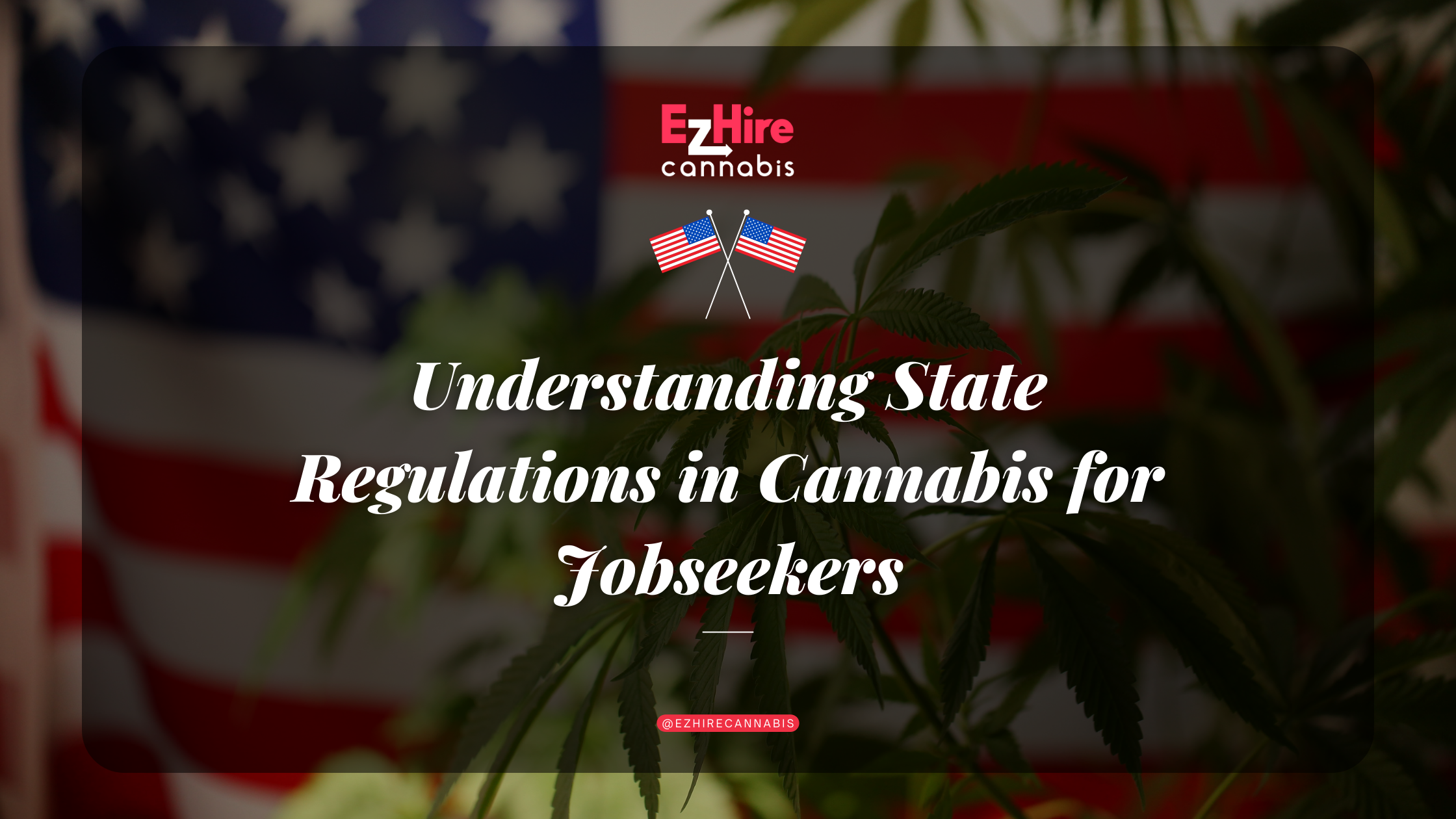
The CannaBiz Guide To Employee Retention
Employee Retention
 Employee retention refers to the technique of investing in your employees' experiences to keep them happy and engaged while lowering turnover.
Employee retention refers to the technique of investing in your employees' experiences to keep them happy and engaged while lowering turnover.
The costs of losing top people may quickly mount, ranging from hiring, recruitment, and training expenses to lost productivity. According to a Gallup report, the cost of replacing an employee might range from half to two times their yearly income.
Even if you’ve been in the cannabis business long enough to have a great team, hiring great employees is always challenging. Many different types of people want to work with cannabis companies - some who have been waiting for this opportunity all their lives and some just looking for new opportunities as they've been recently laid off from another industry.
This can sometimes cause problems with retention as it seems like everyone wants to leave at once when things get slow or the company goes through a rough patch. Also, employees will often voluntarily leave your company before being asked to do so by management out of fear of reprisals on their job due to whatever has taken place. In some cases, employees may be involved in illegal activities involving cannabis, which can also lead to them being let go.
Investing in employee retention begins with understanding why people leave and then devising a strategy to solve these issues and improve the entire employee experience.
While each corporation will have its own set of issues to address, it's critical to keep the preceding main variables in mind as you develop an employee retention plan; you may discover that some of them already exist inside your organization.
The importance of employee retention in cannabis
It's easy to ignore the consequences of high staff turnover. It comes with many challenges that organizations must deal with, but they may find it difficult to comprehend when employees are continually departing. Some of the challenges correlated with poor employee retention are as follows:
Loss of important talents
Can your company continue to operate if a key employee with a specialized skill set is ready to leave?
Essential knowledge is lost
Both in terms of corporate processes, project types, and even how they collaborate with others
Customer connections are harmed
Will clients be exposed to new employees regularly? What does this mean for your business?
Efficiency is harmed:
When is the task done if you're constantly training new employees? Isn't this inefficient? The brief response is that it is ineffective.
Staff morale is harmed
When essential employees depart, the workforce suffers, but what about frequent turnover? It may cause more steady employees to search for more security elsewhere.
It's important to remember that it's not only about the person quitting; there's a cost to employers, including talent acquisition, recruiting expenses, onboarding, and training a new employee, all of which takes time away from the firm, making it less effective.
Prevalent reasons for leaving
 Employees often give several reasons for leaving any organization. To ensure employee retention, it is critical to look at these factors to understand better the issues and problems faced by employees.
Employees often give several reasons for leaving any organization. To ensure employee retention, it is critical to look at these factors to understand better the issues and problems faced by employees.
Before we get into the retention strategies, let's look at the most common reasons for employees departing.
- Few prospects for progression.
- Lack of acknowledgment
- Ineffective management
- Compensation that isn't competitive
- Possibilities for advancement in your job
- Considering a career change
Early retirement is another reason. More employees are retiring than ever before, and the COVID-19 outbreak contributes significantly to this trend.
People have also resigned because they are eligible for stimulus funds or unemployment assistance. Unemployment benefits are rarely available to those who resign from their jobs. However, during the pandemic, several job quitters got unemployment benefits, according to COVID-19.
Others elected not to return to work due to childcare or eldercare duties or because they were afraid of catching COVID-19 on the job.
Employers' answers to employee's retention concerns include the following:
- Increasing budgets by raising salaries, compared to early expectations.
- Increasing workplace adaptability
- Providing off-cycle promotions with pay raises
- Giving spot bonuses and referral incentives
A few statistics worth noting
- More than 3/4th of employees who quit could have been retained had their companies made an effort. (Work Institute)
- Engaged workers are 59% less likely to look for a new job in the next 12 months. (Gallup)
- Ninety-two percent of workers said they would stay with their companies if their supervisors showed a little more empathy.
How to Develop a Retention Strategy for Employees
 A robust employee retention plan is required to enhance the employee experience at your company. While it may be appealing to jump immediately into new retention measures, it will be a pointless exercise, money, and effort if you don't know what issues are causing problems for your employees.
A robust employee retention plan is required to enhance the employee experience at your company. While it may be appealing to jump immediately into new retention measures, it will be a pointless exercise, money, and effort if you don't know what issues are causing problems for your employees.
Before you start working on your retention plan, you'll need to conduct some in-depth empirical and statistical analysis to learn more about the fundamental difficulties in your company. Here's a step-by-step guide to conducting this research and beginning to develop an effective and efficient staff retention plan.
Assess turnover
To enhance employee retention at your organization, you must first determine how many employees depart in a particular period. While there are other sorts of turnover – Internal transfers, willful and enforced transfers, and recruit turnover, to mention a few - you should concentrate on voluntary turnover or the number of individuals that voluntarily departed your company.
Here's how to assess your elective turnover rate
Voluntary Turnover = [(# of voluntary departures) / (average # of employees)] X 100
Remember that the 'average number of workers' statistic should be a company-wide figure (unless you're simply calculating this rate for a specific department, in which case change your figures appropriately) and that the numerator and denominator periods should be consistent.
This might assist you in figuring out if your charges are higher, lower, or the same as your competitors. Depending on how your rates are moving, you may discover you need to look at what's driving your employees to depart more closely.
Take a survey of your staff to see what they think
It would be best to go straight to your workers to find out what underlying organizational challenges are causing top talent to quit. You may obtain anonymous input on all aspects of the employee experience, including compensation, benefits, management, and work-life balance, by regularly researching employees' happiness and engagement. This might assist you in identifying particular areas of your company that want improvement.
While the results of an engagement survey can help you discover organizational, departmental, or management problems, they can't tell you how to fix them. You'll need to go deeper into your results with additional research to figure out how to enhance these areas.
Formulate employee focus panels
You'll have to communicate with a group of employees from throughout the organization about your proposed ideas. Small focus group discussions may help you test your ideas with the people affected by your actions, allowing you to gather feedback and enhance your strategy. Obtaining their buy-in will also aid in implementing any new programs or initiatives, ensuring that they are received with minimum employee resistance.
Put your plan into action
All that's left now is for your executive team to review your findings and suggested improvements. Once you've gained their support, you can begin implementing any initiatives, policies, or training programs you've determined will improve your employees' experience and help your company retain more employees.
Top Employee Retention Strategies
 Are you having trouble keeping your top employees in the current labor industry? For 2021 and beyond, use these employee engagement and retention methods. Here are a few strategies for cannabis businesses to keep their retail, cultivation, sales, and lab testing teams and boost their potential to retain important employees.
Are you having trouble keeping your top employees in the current labor industry? For 2021 and beyond, use these employee engagement and retention methods. Here are a few strategies for cannabis businesses to keep their retail, cultivation, sales, and lab testing teams and boost their potential to retain important employees.
Orientation
Every new employee should be set up for success from the very beginning.
New employees' onboarding and orientation process should guide them about their job descriptions and culture and how they may participate in and prosper. This is a fundamental first step that must be conducted.
Don't skip this first step. It is critical to give them proper training and adequate guidance, as this will set a guideline for them and an essential head start.
Hire high-quality employees right away
The most crucial initial step in maintaining long-term employees is to hire people who are worth keeping.
Compensation for employees
Companies must compensate their employees adequately with competitive remuneration, implying that salaries must be regularly evaluated and adjusted. If your organization cannot increase salary, consider other perks for the employees. Such perks might include bonuses, travel compensation, etc. Equally important are health-care benefits and retirement programs since these may also boost employee morale and motivate them to work harder.
Compensating your employees properly and competitively might assist in boosting company loyalty and prevent them from hunting for new jobs.
Work Options That Are Flexible (and Remote)
The outbreak has demonstrated that telecommuting is effective, and many employees have become accustomed to the adaptability of a flexible schedule. According to one poll, 80% of employees stated they would be more loyal to their present business if it offered flexible work schedules. Letting your workers choose their work schedules and do their job when (and where) is the most convenient for them and is a highly desired bonus that may help your company compete more effectively.
Employee Appreciation
Many people quit their jobs because they believe they are underpaid or unappreciated in their positions. Ensuring that every person feels recognized and valued at work may boost engagement and, as a result, retention.
How to implement employee recognition
How to Make Employee Recognition Work: Instead of giving staff a general "well done," give them specific examples of what they did well and how it impacted the company. This will encourage the efforts that result in a positive outcome and make it plain what employees expect to do.
Individual acknowledgment should be shared with other employees: Send an email or a message using your company's collaboration platform to let others know about an employee's success.
Please keep track of praise and feedback: Keeping a record of your workers' successes in your human capital management system is an excellent approach to keep track of their growth and uncover prospective career routes.
Wellness services should be available
It's only smart business to keep staff well – intellectually, physically, and financially. Organizations that have significantly improved their wellness programs in response to the epidemic have reported happier employees who feel supported and prioritized. Employee stress management programs, retirement planning assistance, and wellness programs are some of the examples that are highly popular amongst employees in major organizations.
Ongoing performance evaluation
The best way to evaluate the team's performance is to interact with them. Talk to your workers about their professional objectives, both long-term and short-term objectives. These one-on-one conversations will assist them in strengthening their future with the company and appreciating it at the same time.
Take a look at what other businesses have to offer
It may appear easy, but seeing what other businesses do is a very excellent idea. It might assist you in understanding what works and what measures other companies are doing to maintain staff retention high.
The fundamentals of a successful staff retention strategy
 Here are a few important principles to keep in mind as you plan your employee retention program:
Here are a few important principles to keep in mind as you plan your employee retention program:
• Everyone has worth: The most effective employee retention methods make employees feel that they genuinely value their efforts and talents and are not just another gear in the machine.
• Relationships take precedence over policies: If you don't create solid relationships with your employees, your employee retention strategy will be worthless. People want to work for supportive and encouraging bosses who can help people find fulfillment and pleasure at work.
• Transparency is crucial: Employee retention strategies that work demand companies to be transparent about what's going on so that employees feel more engaged. It's essential to keep staff informed about new developments through employee newsletters or meetings, such as growth or new projects.
Retaining and Hiring Employees is a delicate balancing act
Every company's employee experience is unique, which is why you'll need to gather both qualitative and quantitative data to figure out where your staff can have the most influence on employee retention. Once you've determined what underlying organizational issues are causing your workers to quit, you can take immediate steps to address them and make your company a better place to work for everyone.




